Fever when to be concerned. Fever in Adults: When to Be Concerned and How to Manage It
How to recognize when a fever in adults becomes worrisome. What are the best ways to manage fever symptoms at home. When should you seek medical attention for a fever.
Understanding Fever: A Natural Defense Mechanism
Fever is the body’s natural response to infection and plays a crucial role in fighting off pathogens. While often uncomfortable, a mild to moderate fever is generally not cause for alarm in healthy adults. However, understanding when a fever becomes concerning is essential for proper care and timely medical intervention.
What Exactly is a Fever?
A fever is typically defined as a body temperature above 98.6°F (37°C). However, normal body temperature can vary slightly from person to person and fluctuate throughout the day. For adults, a temperature of 100.4°F (38°C) or higher is generally considered a fever.
Recognizing Fever Symptoms in Adults
Fever often comes with a constellation of symptoms beyond just an elevated temperature. Recognizing these signs can help you assess the severity of your condition and determine appropriate actions.
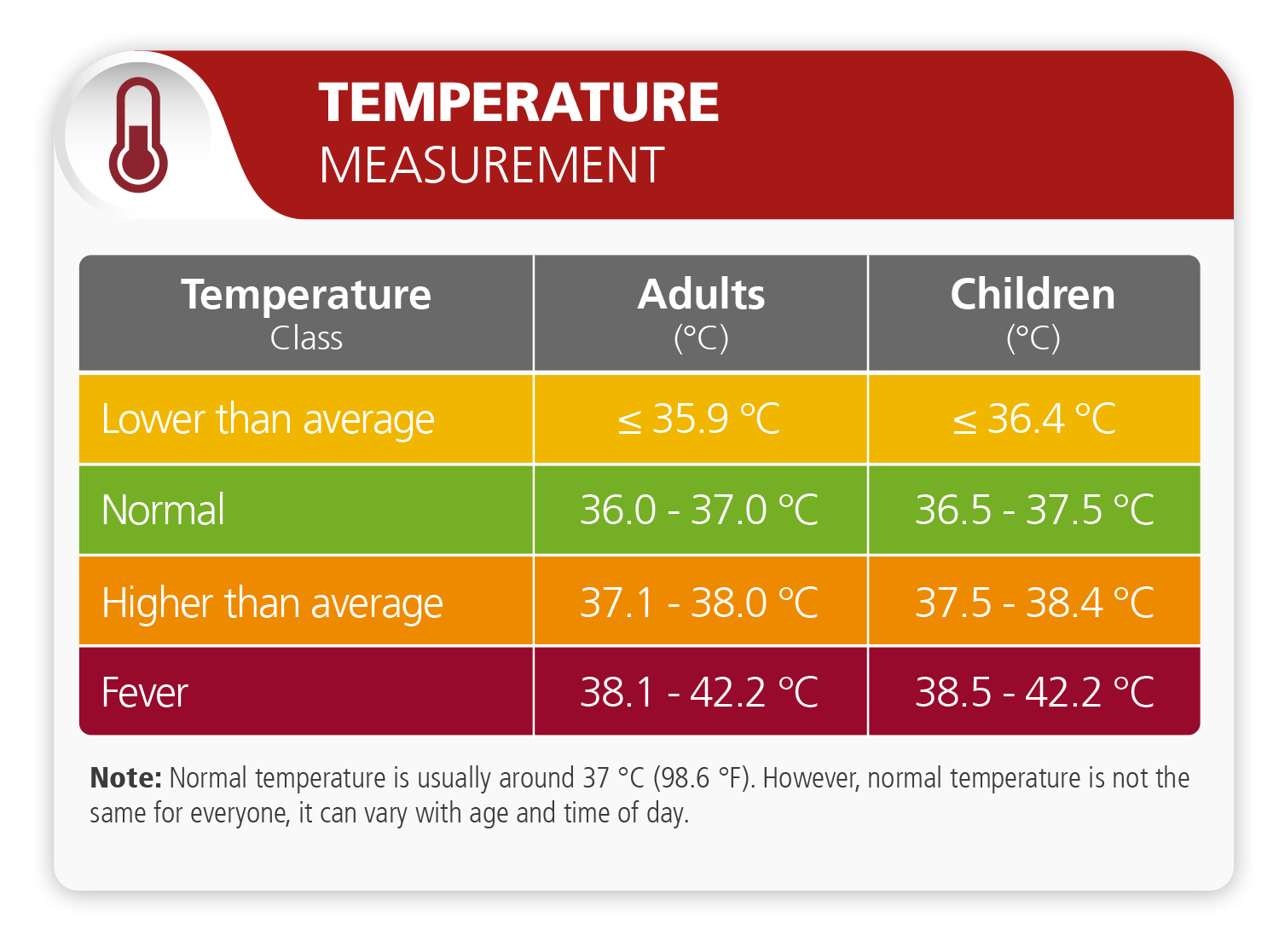
- Sweating or chills
- Headache
- Muscle aches
- Loss of appetite
- Dehydration
- Weakness and fatigue
Home Management of Fever in Adults
For most adults, managing a fever at home is often sufficient. Here are some effective strategies to help alleviate symptoms and promote recovery:
Rest and Hydration
Getting adequate rest allows your body to focus its energy on fighting the infection. Staying hydrated is crucial, as fever can lead to increased fluid loss through sweating.
Over-the-Counter Medications
Acetaminophen (Tylenol) and ibuprofen (Advil, Motrin) can help reduce fever and alleviate associated discomfort. Always follow the recommended dosage instructions on the packaging.
Cool Compresses
Applying a cool, damp cloth to your forehead or wrists can help bring down body temperature and provide relief.
When Does a Fever Become Concerning for Adults?
While most fevers are not dangerous, certain situations warrant medical attention. Be aware of these red flags that indicate a potentially serious condition:
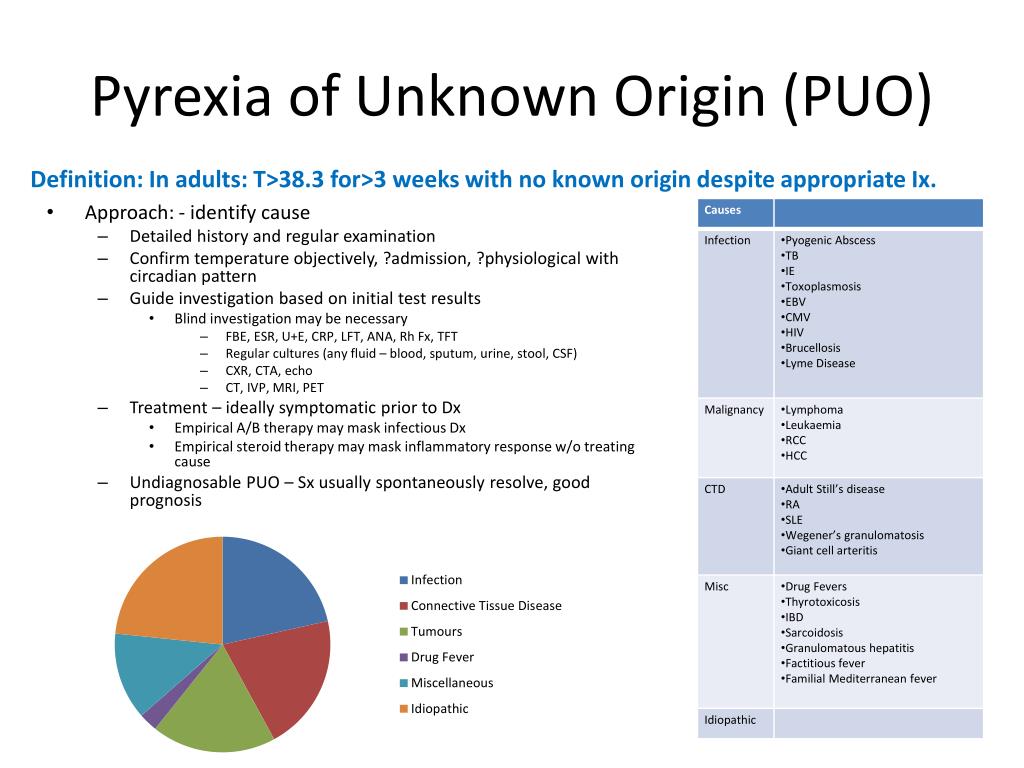
High-Grade Fever
A temperature of 103°F (39.4°C) or higher in adults is considered a high-grade fever and may require medical evaluation, especially if it persists for more than a day or two.
Persistent Fever
Any fever lasting more than three days should be assessed by a healthcare professional, as it may indicate a more severe underlying condition.
Accompanying Severe Symptoms
Seek immediate medical attention if your fever is accompanied by:
- Severe headache
- Stiff neck
- Confusion or altered mental state
- Difficulty breathing
- Chest pain
- Severe abdominal pain
- Unusual skin rash
Special Considerations for Certain Adult Populations
Some adults may be at higher risk for complications from fever and should be more vigilant in monitoring their condition:
Older Adults
Adults over 65 may not always develop a noticeable fever when fighting an infection. Any change in mental status, confusion, or lethargy in older adults should prompt medical evaluation, even in the absence of a high temperature.
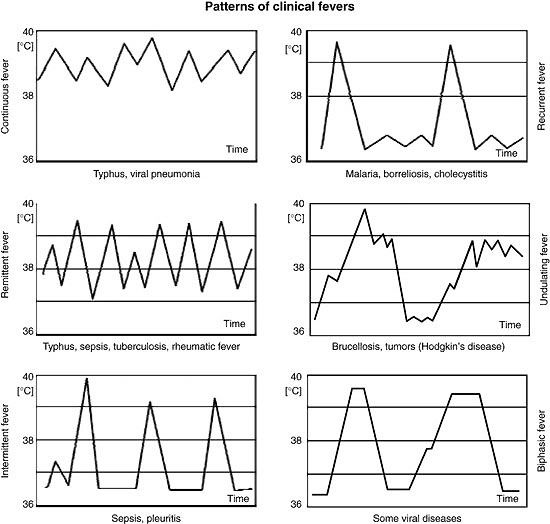
Immunocompromised Individuals
Those with weakened immune systems due to conditions like HIV, cancer, or organ transplants should seek medical attention for any fever, as their bodies may struggle to fight infections effectively.
Adults with Chronic Medical Conditions
Individuals with heart disease, lung problems, diabetes, or other chronic conditions should consult their healthcare provider about when to be concerned about fever, as it may exacerbate their underlying health issues.
Fever and COVID-19: What You Need to Know
In the context of the ongoing global pandemic, fever takes on added significance as a potential symptom of COVID-19. While not all COVID-19 cases present with fever, it remains a common symptom that warrants attention.
When to Suspect COVID-19
If your fever is accompanied by other symptoms such as cough, shortness of breath, loss of taste or smell, or known exposure to someone with COVID-19, consider getting tested and self-isolating until you receive results.
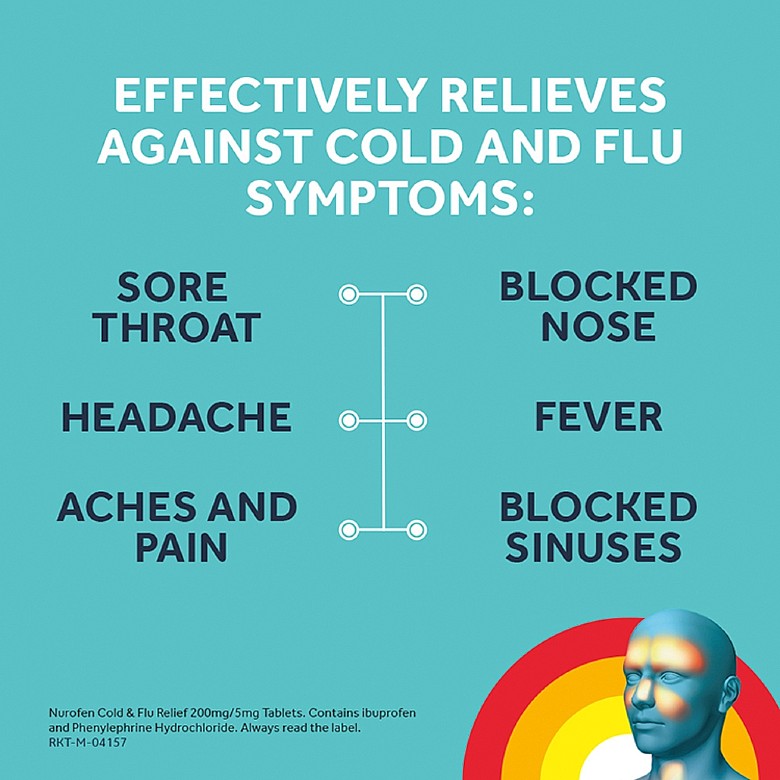
Preventing Fever-Related Complications
While fever itself is often benign, taking steps to prevent complications can ensure a smoother recovery:
Dehydration Prevention
Drink plenty of fluids, including water, clear broths, and electrolyte solutions. Avoid alcohol and caffeine, which can contribute to dehydration.
Monitoring Temperature
Keep track of your temperature readings and any changes in symptoms. This information can be valuable if you need to consult a healthcare provider.
Maintaining a Comfortable Environment
Keep your living space at a comfortable temperature, neither too hot nor too cold. Dress in lightweight, breathable clothing to allow your body to regulate its temperature effectively.
Natural Remedies to Support Fever Recovery
While over-the-counter medications are effective, some people prefer to explore natural remedies to support their body during a fever. Here are some options that may provide relief:
Herbal Teas
Certain herbal teas, such as elderberry, echinacea, and ginger, are believed to have immune-boosting properties that may help your body fight off the underlying cause of the fever.
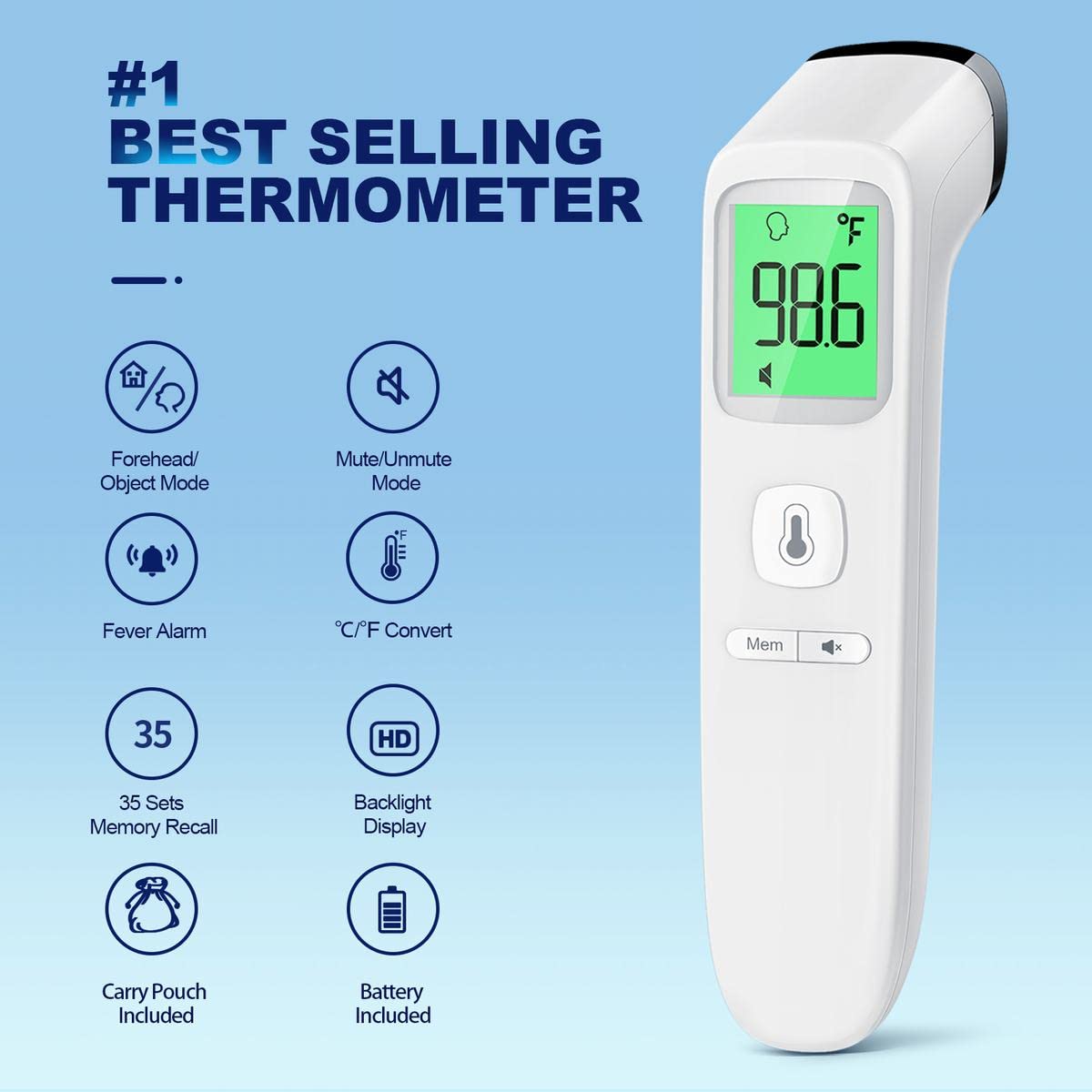
Bone Broth
Rich in minerals and easy to digest, bone broth can help keep you hydrated and nourished when your appetite is low due to fever.
Essential Oils
Aromatherapy using essential oils like eucalyptus or peppermint may help alleviate congestion and promote relaxation during fever recovery. Always dilute essential oils properly and use as directed.
Remember, while these natural remedies may offer symptomatic relief, they are not substitutes for medical care when it’s needed. Always consult with a healthcare professional if you’re unsure about the severity of your condition or if symptoms persist or worsen.
Understanding Fever’s Impact on the Body
While fever can be uncomfortable, it’s important to understand its role in the body’s defense mechanism. Here’s a closer look at how fever affects various bodily functions:
Immune System Activation
Fever stimulates the production and activity of white blood cells, enhancing the body’s ability to fight off pathogens.
Metabolic Changes
During a fever, the body’s metabolic rate increases, which can lead to increased calorie burn and potential weight loss if the fever persists for an extended period.
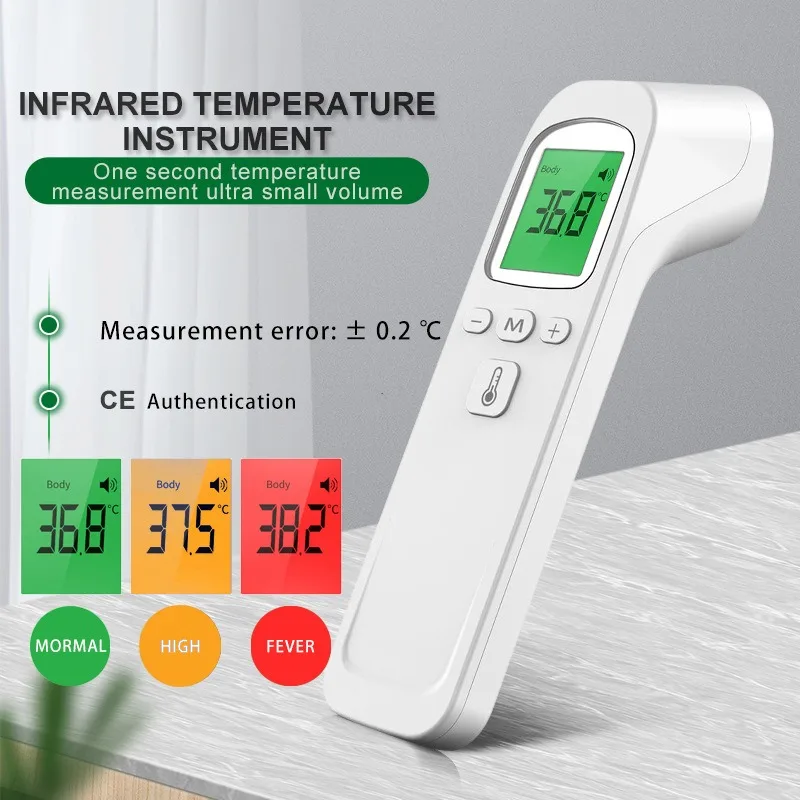
Sleep Patterns
Fever can disrupt normal sleep cycles, leading to fatigue and irritability. Adequate rest becomes even more crucial during this time.
Cognitive Function
High fevers may temporarily affect cognitive abilities, causing confusion or difficulty concentrating. This is usually reversible once the fever subsides.
Understanding these physiological changes can help you better manage your symptoms and recognize when professional medical advice is necessary.
Fever Myths Debunked
There are many misconceptions surrounding fever that can lead to unnecessary worry or inappropriate treatment. Let’s address some common myths:
Myth: Fever Must Be Treated Aggressively to Prevent Brain Damage
Fact: In adults, fever itself does not cause brain damage unless it reaches extremely high levels (typically above 107.6°F or 42°C), which is very rare.
Myth: The Higher the Fever, the More Serious the Illness
Fact: The severity of the underlying condition doesn’t always correlate with the degree of fever. Some serious infections may cause only a low-grade fever, while a relatively minor viral infection might result in a high temperature.

Myth: Fever Should Always Be Reduced to Normal Temperature
Fact: Mild to moderate fevers don’t necessarily need to be brought down to normal. The goal of treatment is to improve comfort rather than normalize the temperature.
Myth: Taking a Cold Bath is the Best Way to Reduce Fever
Fact: Cold baths or alcohol rubs can cause shivering, which may actually increase body temperature. Lukewarm water is more effective and comfortable for reducing fever.
By dispelling these myths, we can approach fever management with a more informed and balanced perspective, focusing on overall well-being rather than just temperature reduction.
When your baby or infant has a fever Information | Mount Sinai
Fever – infant; Fever – baby
What to Expect at Home
Fever is an important part of the body’s defense against infection. Many older infants develop high fevers with even minor illnesses.
Febrile seizures occur in some children and can be scary to parents. However, most febrile seizures are over quickly. These seizures do not mean your child has epilepsy, and do not cause any lasting harm.
Eating and Drinking
Your child should drink plenty of fluids.
- Do not give your baby any fruit juice.
- Babies should drink breast milk or formula.

- If they are vomiting, then an electrolyte drink such as Pedialyte is recommended.
Children can eat foods when they have a fever. But do not force them to eat.
Children who are ill often tolerate bland foods better. A bland diet includes foods that are soft, not very spicy, and low in fiber. You may try:
- Breads, crackers, and pastas made with refined white flour.
- Refined hot cereals, such as oatmeal or cream of wheat.
Treating Your Child’s Fever
Do not bundle up a child with blankets or extra clothes, even if the child has the chills. This may keep the fever from coming down, or make it go higher.
- Try one layer of lightweight clothing, and one lightweight blanket for sleep.

- The room should be comfortable, not too hot or too cool. If the room is hot or stuffy, a fan may help.
Acetaminophen (Tylenol) and ibuprofen (Advil, Motrin) help lower fever in children. Your child’s doctor may tell you to use both types of medicine.
- In children under 3 months of age, call your child’s provider first before giving them medicines.
- Know how much your child weighs. Then always check the instructions on the package.
- Take acetaminophen every 4 to 6 hours.
- Take ibuprofen every 6 to 8 hours. Do not use ibuprofen in children younger than 6 months old.
- Do not give aspirin to children unless your child’s provider tells you it is OK.
A fever does not need to come all the way down to normal. Most children will feel better when their temperature drops by even one degree.
A lukewarm bath or sponge bath may help cool a fever.
- Lukewarm baths work better if the child also gets medicine. Otherwise, the temperature might bounce right back up.

- Do not use cold baths, ice, or alcohol rubs. These often make the situation worse by causing shivering.
When to Call the Doctor
Contact your child’s provider or go to the emergency room when:
- Your child does not act alert or more comfortable when their fever goes down
- Fever symptoms come back after they had gone away
- The child does not make tears when crying
- Your child does not have wet diapers or has not urinated in the past 8 hours
Also, contact your child’s provider or go to the emergency room if your child:
- Is younger than age 3 months and has a rectal temperature of 100.4°F (38°C) or higher.

- Is 3 to 12 months old and has a fever of 102.2°F (39°C) or higher.
- Is under age 2 and has a fever that lasts longer than 48 hours.
- Has a fever over 105°F (40.5°C), unless the fever comes down readily with treatment and the child is comfortable.
- Has had fevers come and go for up to a week or more, even if they are not very high.
- Has other symptoms that suggest an illness may need to be treated, such as a sore throat, earache, diarrhea, nausea or vomiting, or a cough.
- Has a serious medical illness, such as a heart problem, sickle cell anemia, diabetes, or cystic fibrosis.
- Recently had an immunization.
Call 911 or the local emergency number if your child has a fever and:
- Is crying and cannot be calmed down
- Cannot be awakened easily or at all
- Seems confused
- Cannot walk
- Has difficulty breathing, even after their nose is cleared
- Has blue lips, tongue, or nails
- Has a very bad headache
- Has a stiff neck
- Refuses to move an arm or leg
- Has a seizure
- Has a new rash or bruises appear
Marcdante KJ, Kliegman RM. Fever without a focus. In: Marcdante KJ, Kliegman RM, eds. Nelson Essentials of Pediatrics. 8th ed. Philadelphia, PA: Elsevier; 2019:chap 96.
Fever without a focus. In: Marcdante KJ, Kliegman RM, eds. Nelson Essentials of Pediatrics. 8th ed. Philadelphia, PA: Elsevier; 2019:chap 96.
Mick NW. Pediatric fever. In: Walls RM, Hockberger RS, Gausche-Hill M, eds. Rosen’s Emergency Medicine: Concepts and Clinical Practice. 9th ed. Philadelphia, PA: Elsevier; 2018:chap 166.
Last reviewed on: 12/10/2021
Reviewed by: Neil K. Kaneshiro, MD, MHA, Clinical Professor of Pediatrics, University of Washington School of Medicine, Seattle, WA. Also reviewed by David Zieve, MD, MHA, Medical Director, Brenda Conaway, Editorial Director, and the A.D.A.M. Editorial team.
Dignity Health | Fevers in Children: When to Worry
Most children experience fevers, but in some cases, they can become serious or life threatening. Even if your child has had a fever in the past, seeing them spike a temperature can be scary.
Katherine Milroy, MD, a pediatrician with Dignity Health Medical Group in San Francisco, says, “Fevers are one of the common reasons for acute visits to pediatricians. ” While fevers in children are common, it is still important to know what to do when your child has a fever and when to seek help.
” While fevers in children are common, it is still important to know what to do when your child has a fever and when to seek help.
What Is a Fever?
A fever is when body temperature rises above 100.4 degrees Fahrenheit, or 38 degrees Celsius. Dr. Milroy describes a fever as a temporary increase in the body’s temperature, typically in response to an infection.
Fevers are a natural immune response to a bacterial or viral infection. According to Dr. Milroy, “Fever can be caused by either a bacterial or viral infection and can happen in both children and adults. Runny nose, cough, headache, sore throat, or upset stomach often accompany a fever and indicate signs of an infection within the body.”
Infants have a much harder time regulating body temperature than adults; this is because they take longer to begin sweating and sweat less in general than adults do. The normal, baseline body temperatures of newborns and infants are also naturally higher. In fact, newborns have body temps ranging from 97. 0 to 99.5 degrees Fahrenheit.
0 to 99.5 degrees Fahrenheit.
While fevers help the body fight infection, they can also become dangerous if the body’s temperature gets too high or stays elevated for too long.
When Is a Fever Dangerous?
When trying to determine whether a child’s fever is too high, it’s important to take their age and other symptoms into account, as well as how long the fever lasts.
Children under six months old should see a doctor immediately any time they have a fever. Dr. Milroy explains, “Your child should [also] be evaluated by his or her doctor if they are under two years of age, have a fever for longer than 24 hours without any other symptoms, or the fever lasts longer than four or five days.”
In older children, Dr. Milroy says, “Any child with a fever over 105 degrees that doesn’t immediately come down” should be evaluated. Even if their temperature is below 105 degrees, “Fevers that don’t respond to medication should be evaluated by medical personnel as soon as possible. ”
”
You should also call your pediatrician or seek immediate emergency care if your child’s fever is accompanied by any of the following symptoms, since they can indicate a more serious infection:
- Difficulty breathing or swallowing
- Inconsolable, constant crying
- Difficulty feeding or an inability to keep fluids down
- Reduced urination or pain on urination
- Rash
- Stiff neck
- Difficulty waking up
- Seizures or any neurological symptoms
Even if you’re not sure how serious the fever is, your physician can safely advise you on the best course of action to take. Dr. Milroy also encourages parents to take their child to the emergency room if necessary.
The Best Ways to Take a Child’s Temperature
To determine if your child has a fever, Dr. Milroy says the most accurate way to take your child’s temperature is rectally or orally. There are accurate thermometers available over the counter in most drug stores.
For children under two especially, a rectal temperature will yield the most accurate results. However, many children are uncomfortable having their temperature taken that way. Some children also can’t hold the thermometer under their tongue to take an oral temperature. In these cases, it is also possible to take your child’s temperature using a thermometer placed under his or her armpit, via the forehead or using an ear thermometer.
Treating a Mild Fever at Home
Fevers can be treated at home with medications including acetaminophen (Tylenol/Paracetamol) and, if your child is over six months old, ibuprofen (Motrin/Advil). Be sure to read the directions for use on the box, as they indicate age-appropriate dosing instructions. Lukewarm baths, cold compresses, and ensuring your child drinks plenty of fluids can also help ease their fever.
Again, contact your child’s doctor’s office for further assistance on how much medication you should give your child if you have any questions or concerns regarding your child’s fever.
Increased body temperature – NCCH
First aid procedure
Subfebrile temperature (up to 38°C)
- Undress the child.
- Wipe with a damp cloth (slightly above room temperature).
- Do not use antipyretics.
Febrile temperature (above 38°C)
- Provide rest, put to bed.
- Drink plenty of sweet tea, fruit drink.
- Warm the child when chilly (warm blanket, hot tea).
- Give antipyretics.
- At a temperature of 39.5-40°C, the child should not be wrapped up.
- If the temperature is above 40.4°C, call for emergency help and give an antipyretic.
Commentary of a specialist (pediatrician, candidate of medical sciences Gavrilova T.A.) in the morning. Body temperature rises with many diseases. The benefits of elevated temperature are a signal of the disease, a way to fight pathogens (many bacteria and viruses stop multiplying at temperatures above 37-38 ° C), this is a stimulus for the immune response, since a number of protective factors (including interferon) are released only at temperatures above 38°C.
By lowering the fever, we do not affect the cause of the disease, but we can improve the child’s well-being.
Subfebrile temperature (up to 38°C) may appear with overheating, with a viral or bacterial infection. Taking antipyretics in such cases is not worth it if the child’s well-being does not suffer.
At “febrile” temperature (above 38°C) there is vasoconstriction, increased muscle contractions (hence – chills, tremors), in young children – convulsions (the so-called “febrile” convulsions).
When the temperature rises to 39.5-40.0°C, the skin vessels dilate (the skin turns red), such a child should not be wrapped up.
Fever is dangerous with spasm of skin vessels – this is malignant hyperthermia.
Symptoms:
- temperature above 40.4°C;
- variegated, “marbled” skin coloration;
- limbs cold to the touch;
It is necessary to call an emergency and be sure to give an antipyretic, preferably in a solution inside.
Antipyretics
Children should be given antipyretics at temperatures above 38.0°C, but if the child does not tolerate high temperatures, is worried, cries, or has seizures at elevated temperatures, antipyretics are given at temperatures above 37.5°C. After giving an antipyretic, you can not calm down: be sure to consult a doctor (for recovery, you will need to take other drugs).
The main antipyretic recommended for children is PARACETAMOL (acetaminophen). It does not have a pronounced side effect, has anti-inflammatory and analgesic properties, relieves discomfort.
Dose of paracetamol: 10-12 mg/kg of body weight per dose, 2-4 times a day (daily dose should not exceed 40 mg/kg of body weight). Oral paracetamol solution acts quickly – after 20-30 minutes.
For a small child, it is better to use children’s dosage forms, for younger students use paracetamol tablets of 0.2 g, for older students – 0.5 g each. The action of the candle begins in 30-60 minutes and lasts 5-6 hours.
Some antipyretic drugs have serious side effects, so they are not used in children:
- acetylsalicylic acid (included in such as Aspirin, ASA, Askofen, Aspro-S, Citramon, effervescent tablets for colds, etc.) – for influenza, SARS, chickenpox can cause Reye’s syndrome (liver, brain damage).
- Analgin (included in such drugs as Baralgin, Spazmalgon, etc.) – causes damage to the hematopoietic system.
What should I do if the difference between the upper and lower pressure is violated?
Blood pressure is an objective indicator that allows you to verify the normal functioning of blood vessels and the heart or to identify the first signs of disorders. Various diseases can develop without external manifestations, and blood pressure control makes it possible to take timely measures and prevent life-threatening complications.
Read this article:
- What do pressure readings mean?
- Difference between upper and lower pressure: norm and deviation
- Why does the upper pressure increase?
- Causes of low upper pressure
- What does high lower pressure indicate?
- Low blood pressure
- What should I do in case of abnormalities?
What do the pressure readings mean?
The pressure is measured using a tonometer and is expressed in two numbers. They show the upper and lower pressure, which in medicine is called systolic and diastolic. The first indicator means the force with which the blood acts on the vascular walls during the contraction of the heart, the second – during its relaxation.
They show the upper and lower pressure, which in medicine is called systolic and diastolic. The first indicator means the force with which the blood acts on the vascular walls during the contraction of the heart, the second – during its relaxation.
Upper pressure is determined by the frequency of contractions of the heart muscle. In older people, the heart contracts more often, so higher blood pressure standards are set for them. Up to 55 years, systolic pressure from 110 to 130 units is considered normal, over 140 units. The lower indicator depends on the elasticity of the vessels, their tone, normally it is 65-80 units.
Standard and deviations
The difference between systolic and diastolic pressure should be about 40 units. In some cases, deviations are caused by physical exertion, psycho-emotional overstrain, and the use of certain products. But more often they indicate changes in the vessels, the development of pathological processes.
Understanding when there is a danger, and when you should not worry, is very simple.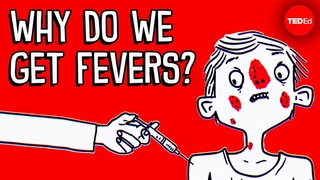 If the cause of the deviation from the norm disappears, and the difference in pressure normalizes, then nothing terrible is happening. This happens, for example, when changes are caused by a strong feeling of hunger, excessive physical exertion, a stressful situation, hypothermia, or several factors at the same time.
If the cause of the deviation from the norm disappears, and the difference in pressure normalizes, then nothing terrible is happening. This happens, for example, when changes are caused by a strong feeling of hunger, excessive physical exertion, a stressful situation, hypothermia, or several factors at the same time.
However, too little or too much difference between systolic and diastolic pressure, which persists for a long time in a calm state and for no apparent reason – this is already a cause for concern. It should be noted that we are talking about a difference not exceeding 25% of the upper pressure. Such a deviation may indicate the development of:
- Tachycardia;
- Stroke of the left ventricle of the heart;
- heart failure;
- Myocarditis;
- aortic stenosis;
- Cardiosclerosis;
- Insufficiency of internal organs;
- Heart attack provoked by powerful physical activity.
Very often, the difference between upper and lower pressure, which does not fit into the norm, is only one of the manifestations of a pathological condition. It may be accompanied by certain symptoms, such as weakness and headache, drowsiness and visual disturbances, dizziness and unreasonable irritability. All this may indicate oxygen starvation of internal organs.
It may be accompanied by certain symptoms, such as weakness and headache, drowsiness and visual disturbances, dizziness and unreasonable irritability. All this may indicate oxygen starvation of internal organs.
The difference in upper and lower pressure from 50 units is an obvious deviation from the norm, which develops against the background of diseases of the gallbladder and digestive system, tuberculosis, wear and tear of blood vessels and the heart muscle. As a rule, in this state, a person becomes indifferent to everything and lethargic, or vice versa, aggressive and agitated. Possible dizziness, fainting, trembling in the limbs.
If these symptoms appear in combination with an increase or decrease in the difference between upper and lower pressure, you should consult a doctor. This condition is very dangerous, it often leads to serious consequences, up to cardiac arrest. You should never try to solve the problem on your own, for example, by taking some kind of medication. Treatment is prescribed only by a doctor after carrying out diagnostic procedures, identifying the pathology itself and its causes.
Treatment is prescribed only by a doctor after carrying out diagnostic procedures, identifying the pathology itself and its causes.
A small difference between the indicators is the result of severe overwork, up to a breakdown, exhaustion of the body. The cause of deviations may be serious bleeding.
Why does the upper pressure increase?
Systolic pressure sometimes exceeds the norm. High upper pressure indicates:
- Bradycardia – slowing of the heart rate;
- Severe degree of anemia;
- Thyrotoxicosis – excessive production of hormones by the thyroid gland;
- An increase in the density of the vascular walls, a decrease in their elasticity;
- Aortic valve insufficiency.
Sometimes upper pressure rises in adolescents due to hormonal changes in the body. In this case, the deviation from the norm is not considered as a pathology if the situation returns to normal after puberty. However, people who have experienced such a problem in childhood have an increased risk of developing hypertension.
With a persistent increase in upper pressure, a diagnosis of systolic arterial hypertension is made. For the treatment of such a disease, the same methods are used as for hypertension. In particular, drugs that reduce blood pressure are prescribed, regular physical activity is recommended in accordance with the state of health and age, as well as systematic monitoring of pressure.
Causes of low upper pressure
Low upper pressure is typical for people who do not have a balanced sleep and rest regimen, constantly experiencing stress and depression, physical overwork. But some diseases can also be the cause of deviations, for example:
- Pathology of the thyroid gland, causing hormonal failure in the body;
- Vegetovascular dystonia;
- Diabetes;
- Heart failure;
- Arrhythmia.
In such a situation, drug therapy may be required, but more often a good sleep, a contrast shower, and strong tea are recommended. Specific measures depend on the cause that caused the violation, and only a doctor can identify it.
Specific measures depend on the cause that caused the violation, and only a doctor can identify it.
What does high low pressure indicate?
High lower pressure is often the result of diseases:
- Pathological processes in the adrenal glands;
- kidney disease;
- problems with blood flow;
- Vascular diseases;
- Metabolic disorders.
One of the most common causes of high lower blood pressure is vasoconstriction due to cholesterol buildup. Certain medications, an increase in the concentration of adrenaline in the blood against the background of stress, and malnutrition, which leads to the formation of cholesterol plaques and an increase in body weight, can also provoke an increase in the indicator, i.e. creating an additional load on the vessels. Bad habits also have a negative impact.
Reduced lower pressure
Low lower pressure occurs when there is a violation of vascular tone, blood flow in the brain, internal organs. A decrease in the rate is caused by kidney diseases, congenital disorders of the endocrine glands. In such cases, muscle weakness and fever, abdominal pain, sometimes vomiting and convulsions appear. Appropriate medications are prescribed to normalize the pressure.
A decrease in the rate is caused by kidney diseases, congenital disorders of the endocrine glands. In such cases, muscle weakness and fever, abdominal pain, sometimes vomiting and convulsions appear. Appropriate medications are prescribed to normalize the pressure.
What to do in case of deviations?
The difference between the upper and lower pressure, which is outside the normal range, is not a reason for panic. It is important to consider several points:
- With age, the gap between systolic and diastolic pressure increases due to a decrease in the elasticity of the vascular wall;
- There is a possibility that the indicators do not reflect the real picture, for example, if the rules for measuring pressure are violated;
- If the measurement was taken immediately after physical exertion or during strong excitement, they do not reflect the real picture;
- The reason for the increase in the difference in women may be hormonal changes against the background of menopause.




:max_bytes(150000):strip_icc()/when-to-see-a-doctor-for-a-fever-770768_FINAL-5c05c20ec9e77c0001e07722.png)

